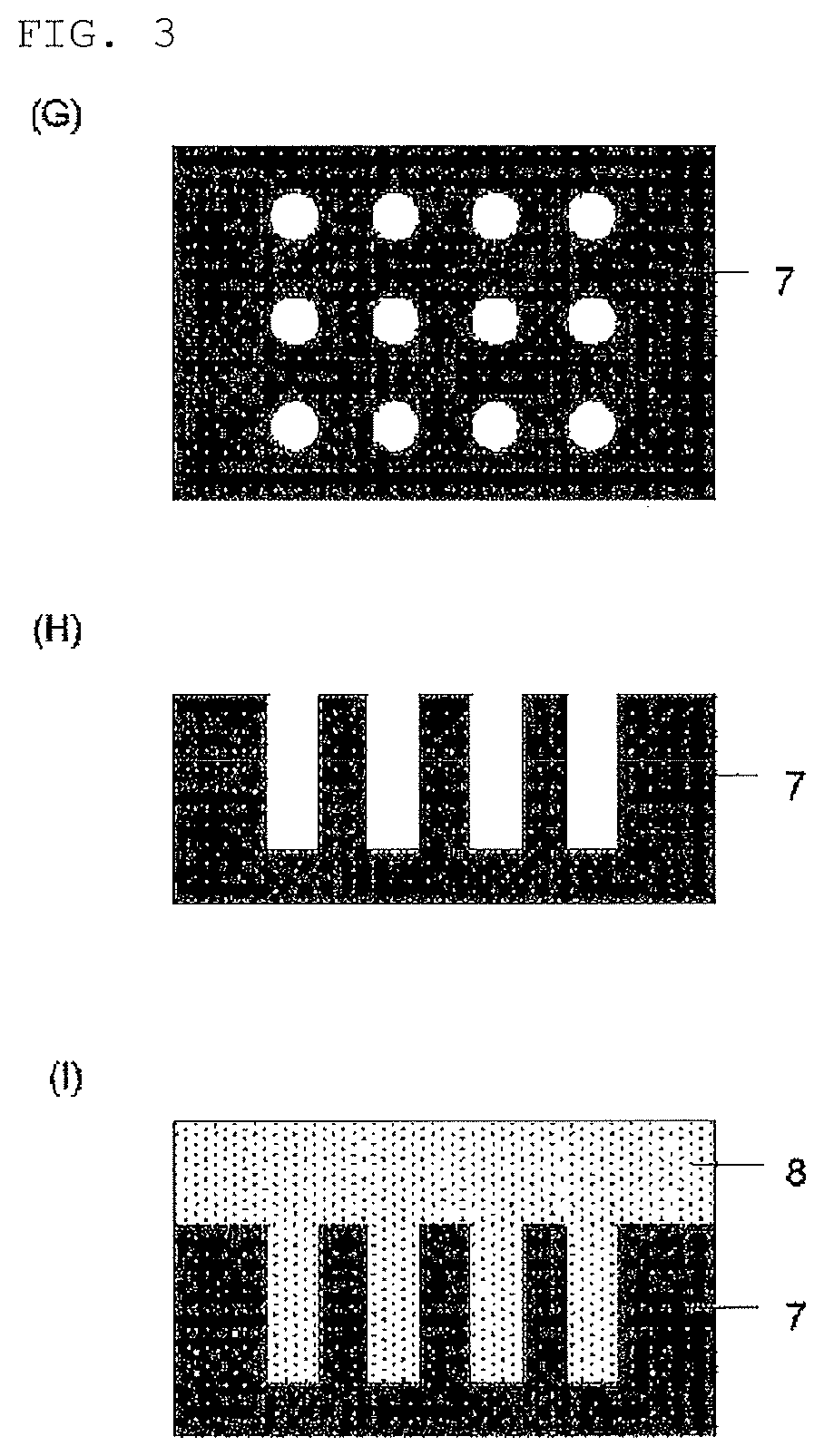Compound, method for manufacturing the compound, and composition for forming organic film
a compound and organic film technology, applied in the field of compound, method for manufacturing the compound, and composition for forming organic film, can solve the problems of not having the inability to produce semiconductor devices in a good yield, and the inability to achieve a complete etching selectivity between the photoresist film and the production process of semiconductor devices, etc., to achieve excellent gap filling/planar
- Summary
- Abstract
- Description
- Claims
- Application Information
AI Technical Summary
Benefits of technology
Problems solved by technology
Method used
Image
Examples
synthesis example 1
[Synthesis Example 1] Synthesis of Compound (A1)
[0150]A mixture of 200 g of Diol (B1), 800 g of 1,2-dichloroethene, and 76 g of acetyl chloride was heated to reflux for 72 hours. After cooling to room temperature, 400 mL of diisopropyl ether was added thereto. The yielded solid was filtered off, and dried in vacuum to give 211 g of Dichloride (B2).
[0151]Into an ice-cooled mixture of 10.2 g of ethynylbenzene and 80 g of toluene, 100 mL of 1 N tetrahydrofuran solution of ethylmagnesium bromide was added, and this was allowed to gradually raise the temperature to room temperature. After addition of 13.2 g of Dichloride (B2), this was heated and stirred at 60° C. for 5 hours. After cooling, dilute hydrochloric acid was added to stop the reaction. This was washed with water, followed by concentration in vacuum to give 16.3 g of the object (A1). The following are analytical results of IR and LC-MS for the synthesized Compound (A1).
[0152]
[0153]IR (D-ATR): ν=3285, 3060, 1600, 1490, 1448, 81...
synthesis example 2
[Synthesis Example 2] Synthesis of Compound (A2)
[0155]Compound (A2) was synthesized by the method in accordance with Synthesis Example 1 except for using 1-ethynyl-4-methoxybenzene instead of ethynylbenzene. The following are analytical results of IR and LC-MS for the synthesized Compound (A2).
[0156]
[0157]IR (D-ATR): ν=3037, 2955, 2933, 2835, 1605, 1509, 1448, 1290, 1248, 1170, 1030, 831, 812, 765, 754, and 736 cm−1
[0158]LC-MS (MM-ES Positive / aq.AcONH4-MeCN): m / z=743 (C56H38O2+H+).
synthesis example 3
[Synthesis Example 3] Synthesis of Compound (A3)
[0159]To a mixture of 6.9 g of Dichloride (B2) and 50 g of toluene, 100 mL of 0.5 N tetrahydrofuran solution of ethylmagnesium bromide was added, and this was refluxed with heating for 200 minutes. After cooling, dilute hydrochloric acid was added to stop the reaction. This was washed with water, followed by concentration in vacuum to give 6.6 g of the compound (A3). The weight average molecular weight (Mw) and dispersity (Mw / Mn) were determined by GPC, and found that Mw=1100 and Mw / Mn=1.74. The following are analytical results of IR and 1H NMR for the synthesized Compound (A3).
[0160]
[0161]IR (D-ATR): ν=3291, 3061, 3036, 1604, 1493, 1475, 1448, 1005, 920, 815, 753, 730, and 650 cm−1
[0162]1H NMR (600 MHz, THF-d8) δ (ppm): 2.85-2.90 (2H, HC≡C—), 7.00-7.85 (49H, Ar—H).
PUM
| Property | Measurement | Unit |
|---|---|---|
| weight-average molecular weight | aaaaa | aaaaa |
| weight-average molecular weight | aaaaa | aaaaa |
| temperature | aaaaa | aaaaa |
Abstract
Description
Claims
Application Information
 Login to View More
Login to View More - R&D
- Intellectual Property
- Life Sciences
- Materials
- Tech Scout
- Unparalleled Data Quality
- Higher Quality Content
- 60% Fewer Hallucinations
Browse by: Latest US Patents, China's latest patents, Technical Efficacy Thesaurus, Application Domain, Technology Topic, Popular Technical Reports.
© 2025 PatSnap. All rights reserved.Legal|Privacy policy|Modern Slavery Act Transparency Statement|Sitemap|About US| Contact US: help@patsnap.com



